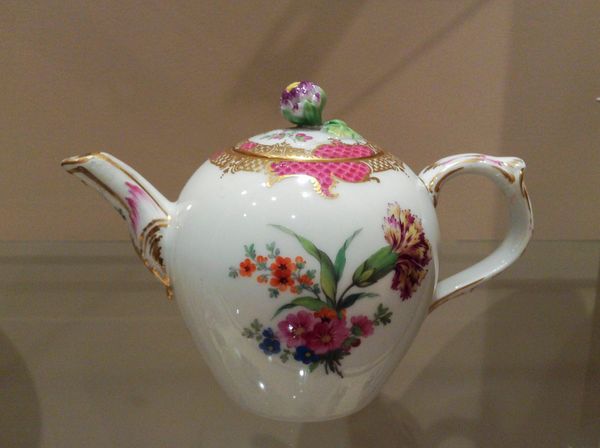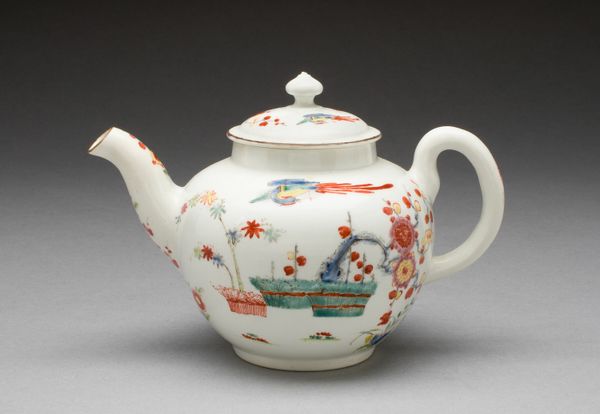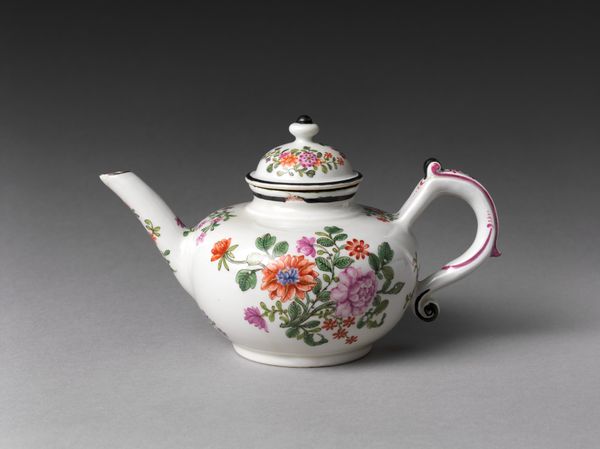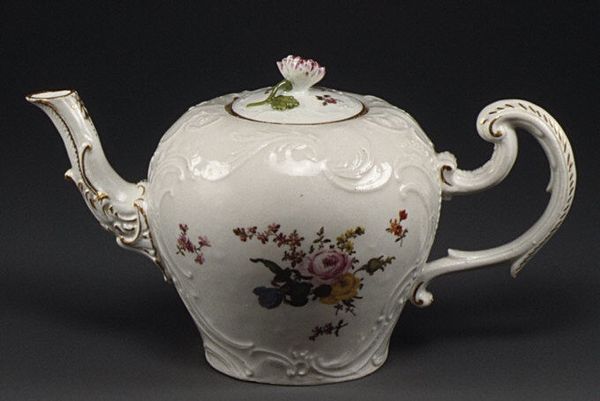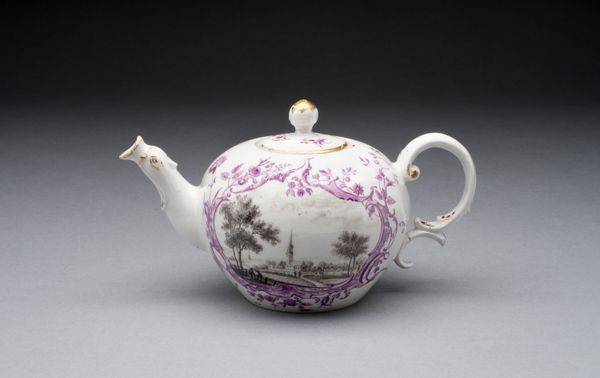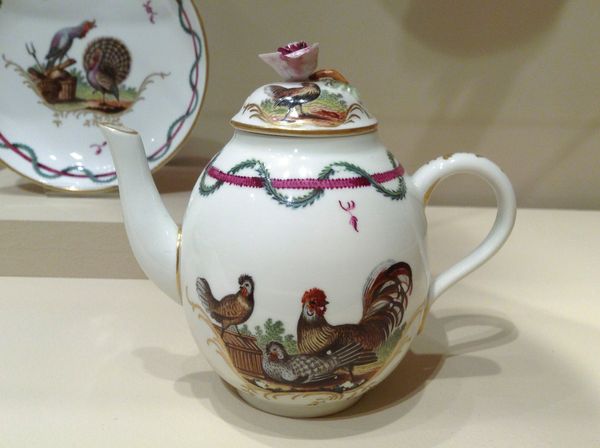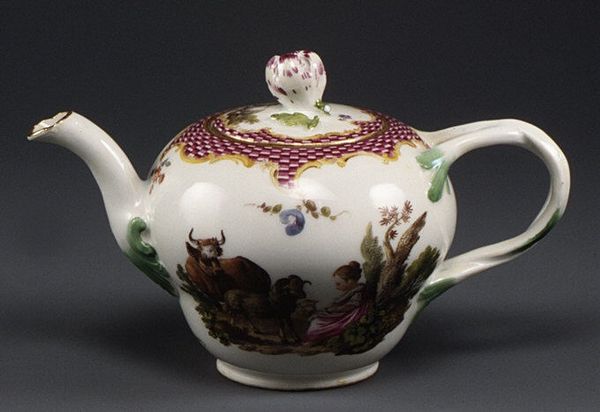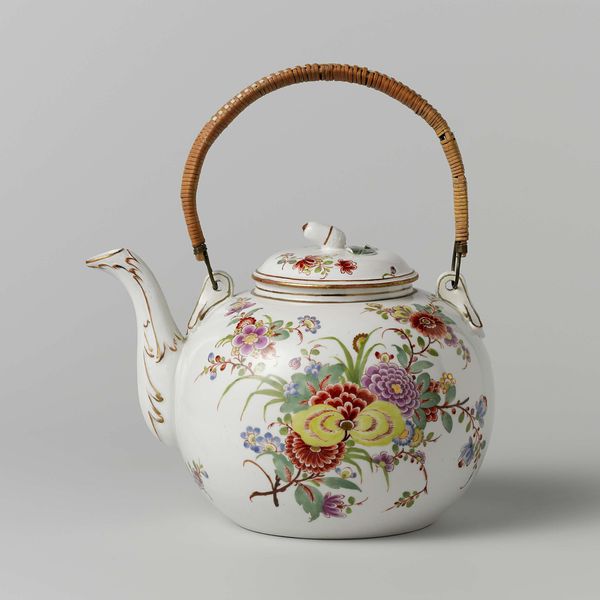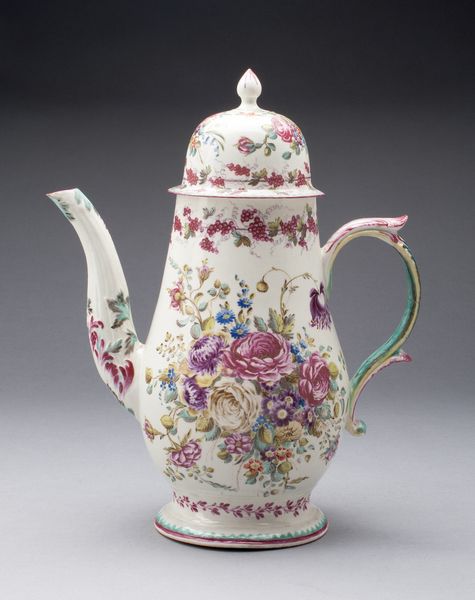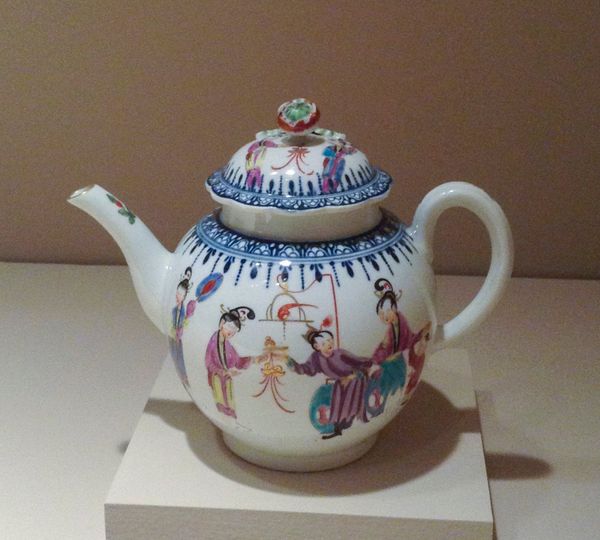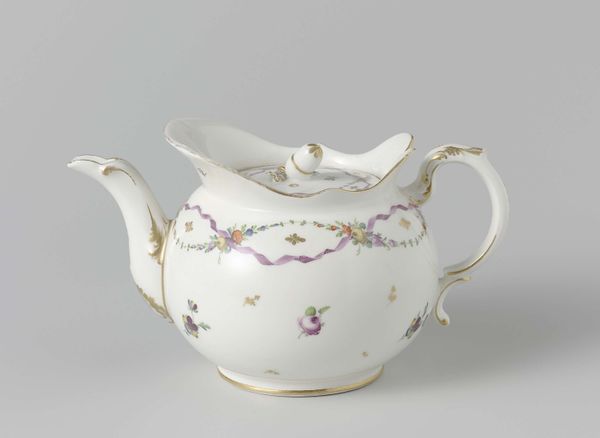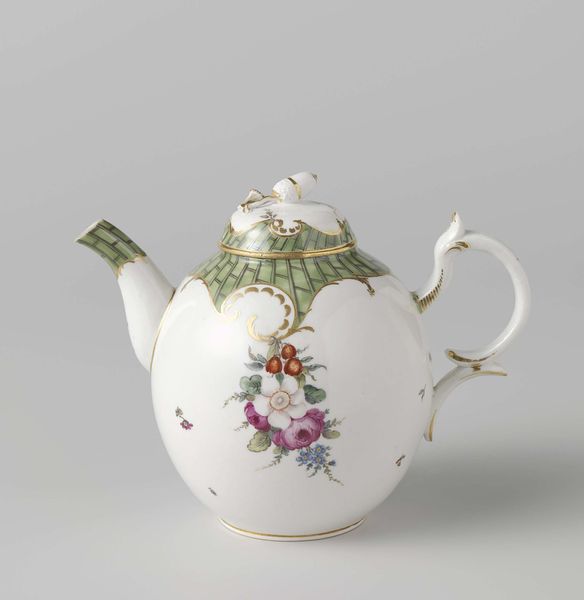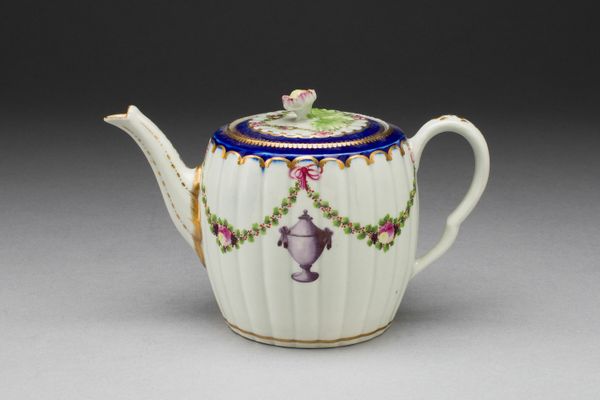
ceramic, porcelain
#
ceramic
#
porcelain
#
earthenware
#
decorative-art
Dimensions: 4 x 6 1/8 x 3 3/8 in. (10.16 x 15.56 x 8.57 cm)
Copyright: Public Domain
Editor: So, here we have a ceramic teapot, likely porcelain. It’s covered in colourful floral decoration, and according to the museum, its date and creator are unknown. I am really struck by the decoration here; there are the quite traditionally-rendered floral patterns on the body contrasting with what looks almost like a serpentine dragon on the spout. What historical contexts do you consider when encountering something like this? Curator: Given its presence in a museum, let's consider how this teapot attains and maintains value. Decorative arts objects, especially those mass produced like ceramics, gain cultural significance and economic value through various means. We often see how museum selection and display practices contribute to elevating everyday items like teapots to objects of art. Who made the decisions to include it, and why? These decisions have huge impact on the value assigned to it. Editor: That's fascinating. So, the fact that it's *here*, in a museum, affects its perceived value and significance as much as the quality of the craftsmanship. I guess I hadn't thought about it like that before, concentrating instead on who *might* have made it, rather than who chose it. But this teapot still needed to be considered worthy for acceptance into the collection in the first place, correct? How does one know, particularly for something "Date Unknown", where it came from or how it has been treated? Curator: Exactly. And how its ownership has been interpreted also influences its market value. This intersects, naturally, with political, economic, and aesthetic histories that govern taste and cultural value within the art world and more generally across culture and politics, wouldn’t you say? Editor: Yes, absolutely. It’s given me a whole new appreciation for the layers of meaning objects in a museum can hold, not just because of their creation, but also because of their curated lives. Curator: Precisely. Considering how institutions and social narratives shape the life of objects, even a humble teapot like this, enriches our understanding of art history and our own values.
Comments
No comments
Be the first to comment and join the conversation on the ultimate creative platform.
